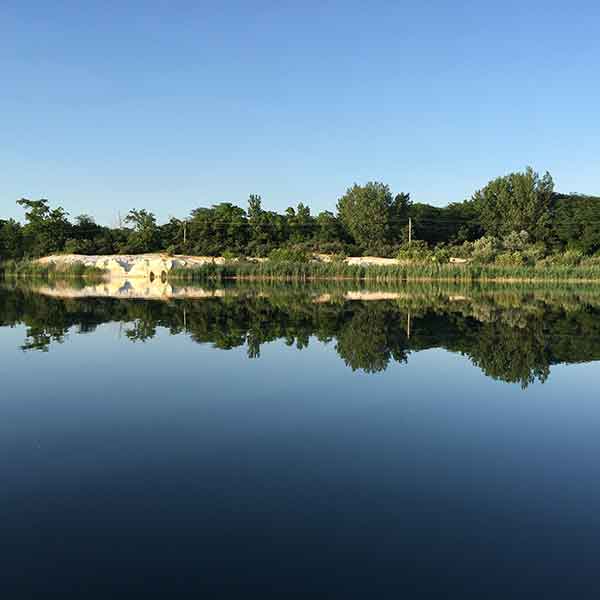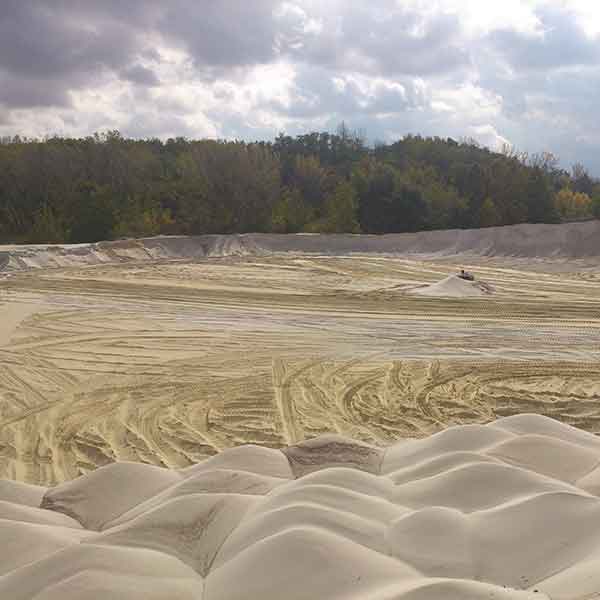Geological Origins of St. Peter Sand
Over 450 million years ago, during the Ordovician period, a blanket of sand was laid down in shallow seas covering much of what is now known as the United States. This deposit was to become known as the St. Peter Sandstone, taking its name from the St. Peter River (since changed to the Minnesota River) where its occurrence was first noted. The source of the sand was, most probably, pre-Cambrian crystallines (more than 500 million years old) together with Cambrian and other early Ordovician sandstones lying to the north of the area known as the Canadian Shield.
As the area gradually depressed to form the St. Peter basin, sand continued to flow in covering the eroded Shakope limestone with a vast deposit. During the period of deposition, temporary beaches, bars and sandy flats were formed. Wind action and reworking by waves removed the clays and sorted and rounded the grains. At the close of the St. Peter period, in northern Illinois, the land was submerged. The sand was overlain by deposits of carbonates, muds and other skeletal debris which later became known as the Platteville-Galena limestone and dolomite.
Much later an area of Illinois, known as the La Salle anticline, was folded and subsequently (about 280 million years ago) uplifted, where it became subject to erosion. During the Pleistocene epoch, or glacial period (beginning 2 to 3 million years ago), at least two continental ice sheets further eroded and later buried the St. Peter outcrops under a variable thickness of glacial till, a heterogeneous mixture of clay and gravel. More recent erosion has removed some of this glacial drift exposing outcrops of St. Peter sandstone.
Situated on the anticline is the Troy Grove Dome, a structure about five miles long and three miles wide, cut by four faults. The northern boundary of Manley Bros. property is cut by an east-west fault, which raised the sandstone of this property to approximately the same elevation as the overlying Platteville limestone, with the peculiar result of limestone being mined on one side of the road (fault) and sandstone on the other. About thirty feet of glacial till overburden overlies thirty to forty feet of pure quartz sand averaging 52 AFS. Underlying this is a further fifty feet or so of fine, 90 AFS., quartz-feldspar sandstone.
The St. Peter deposit is vast and most producers have substantial reserves. We, at Manley Bros., have sufficient high grade coarse silica to last for more than thirty years and an almost inexhaustible supply of the finer feldspathic sand.


